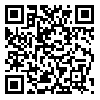BibTeX | RIS | EndNote | Medlars | ProCite | Reference Manager | RefWorks
Send citation to:
URL: http://jap.iums.ac.ir/article-1-5248-en.html
2- Birjand University of Medical Sciences.
Aim and background: Tracheal intubation remains the choice method for keeping airways open during mechanical ventilation. Among the various methods, standard method of direct laryngoscopy generally used by non-skilled staff increases the risk of failure. This study was performed to evaluate and compare the results of tracheal intubation using laryngeal masks vs. glidescope led by novice personnel. Methods and Materials: This descriptive-prospective study were conducted on 31 trainees and interns of Birjand University of Medical Sciences. Each of the participants randomly intubated two patient with laryngeal mask airway or glidescope, and the results were recorded a professional as observer. The maximum authorized turn to try tracheal intubation was once per person with a time limit of 90 seconds. If the participant had two unsuccessful tries or due to a problem regarding the intubation process an anesthesiologist took the control and performed the intubation and the intubation try by the study participant was considered unsuccessful. Findings: Tracheal intubation success rate in laryngoscopic and laryngeal mask airway )LMA( was 90.3% and 96.8%, respectively )P=0.325(. Average time of tracheal intubation in laryngeal mask airway and laryngoscopy group was 29.25 ± 3.90 and 48.25 ± 4.90 )P<0.001(. conclusions: Results of this study suggest a higher rate of success as well as faster intubation for laryngeal mask airway. Due to the cost and feasibility of using this method, the researchers recommend that hospitals should focus on training with and providing laryngeal mask airways
Received: 2015.10.31 | Accepted: 2016.09.24 | Published: 2016.11.5
| Rights and permissions | |
 |
This work is licensed under a Creative Commons Attribution-NonCommercial 4.0 International License. |





